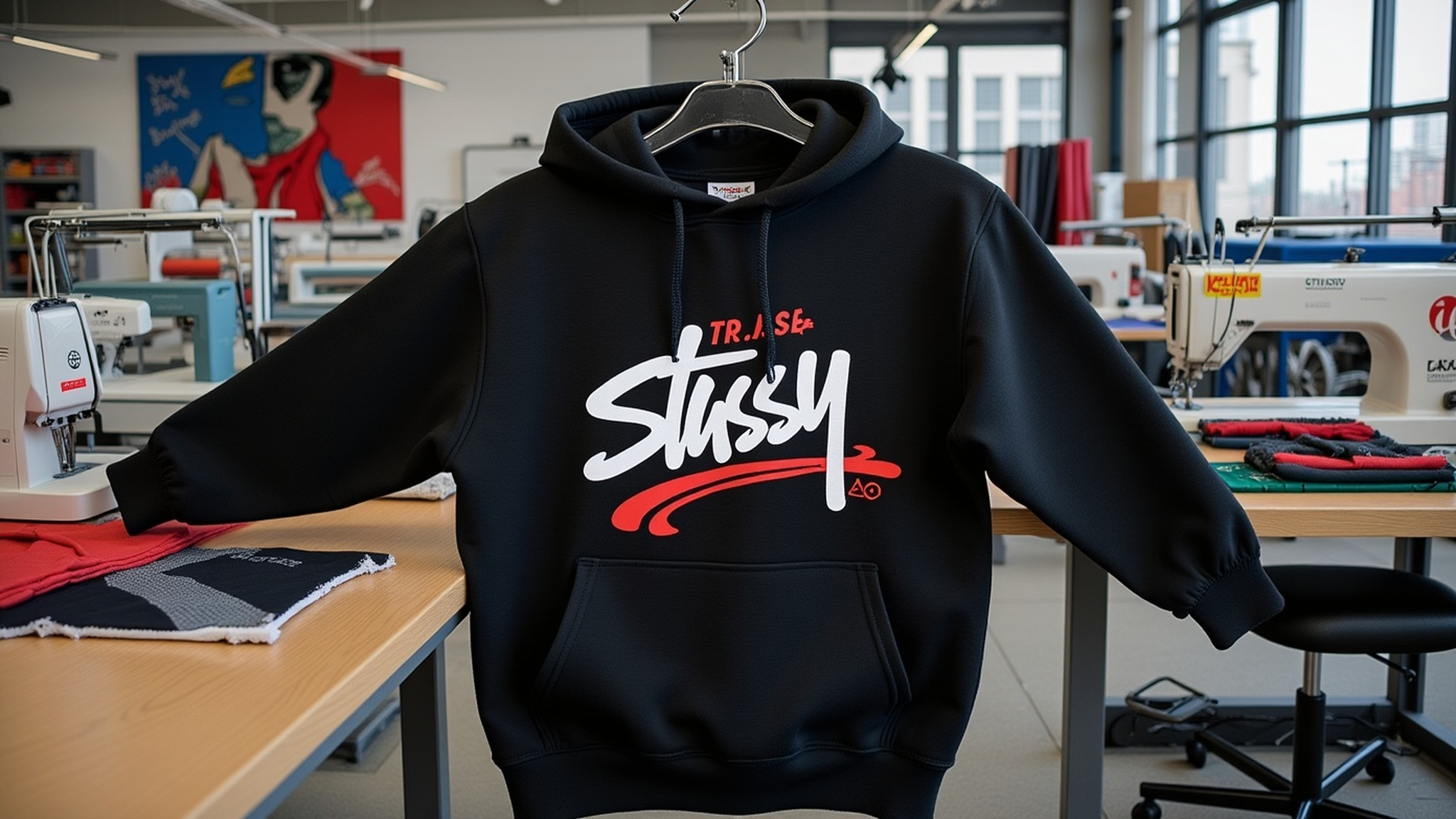So you’re asking, “Where is Stussy sweatshirt made?”
Not just the label. Not just the “China” tag you flip over in the dressing room. You want the real answer. The messy one. The one that doesn’t fit on a hangtag.
Let me tell you — I’ve been knee-deep in this world for over a decade. I’ve stood in factories where the air smells like dye and ambition. I’ve watched a hoodie go from sketch to shelf in three weeks flat. I’ve seen brands blow up overnight and collapse just as fast because they didn’t understand where their clothes came from — and more importantly, why they were made where they were.
So when someone asks me where Stussy makes their sweatshirts, I don’t just say “Vietnam” or “Portugal.” I say: It depends. On the season. On the drop. On the tariff. On the damn weather in Shenzhen last month.
And honestly? That’s the only honest answer.
Because manufacturing isn’t a static thing. It’s a living, breathing, constantly shifting beast. And if you’re building a brand — even if it’s just starting out — you need to understand that. Not the PR version. The raw, unfiltered truth.
At Fexwear, we don’t just make clothes. We help people build brands that survive. And survival means understanding the why behind the where.
So let’s go deep. Not just on Stussy. But on what their journey teaches us about how things really get made in 2025.
Where Is Stussy Sweatshirt Made – The Early Days
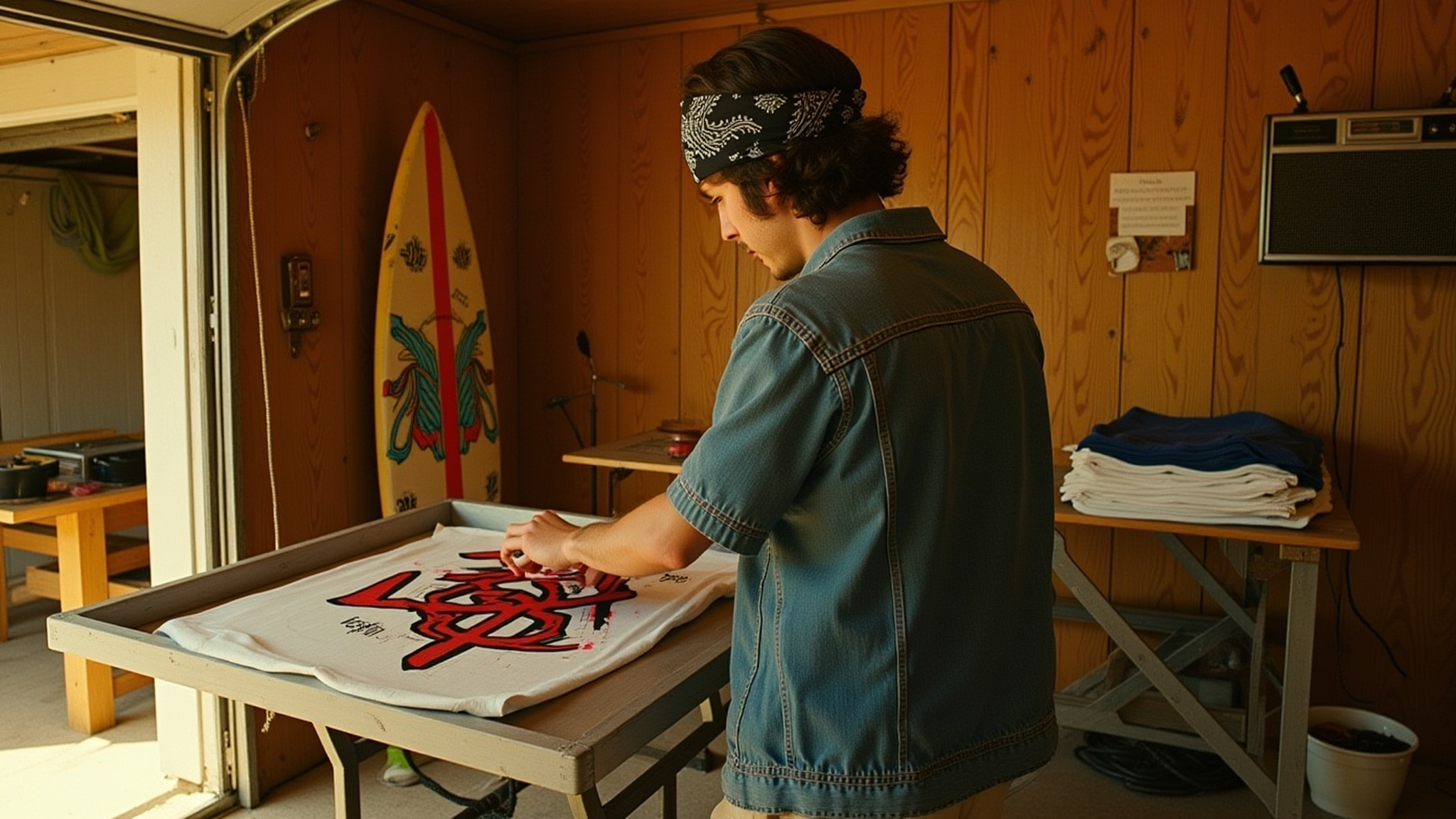
Alright, let’s go back. Way back.
Stussy didn’t start in a boardroom. It started on a surfboard. Shawn Stussy was shaping boards in Laguna Beach in the early ’80s, slapping his signature on them like a tag. People noticed. They liked it. They wanted it on clothes.
So he started printing t-shirts. Simple stuff. Black ink on white cotton. Hand-printed. In batches of 50. Maybe 100.
And yeah — they were made in California. Right there. In garages, in small shops around LA. His mom even helped cut the patterns for the first Bermuda shorts. Can you imagine that now? The founder’s mom pattern-making for a brand that would one day be in Dover Street Market?
But here’s the thing: it wasn’t about “local” because it was trendy. It was because there was no other option. No global network. No Alibaba. No 30-day shipping from Vietnam. It was local because it had to be.
By 1984, he teamed up with Frank Sinatra Jr. (yes, that Sinatra) and turned it into a real brand. Moved into an office in Irvine. Started hiring local manufacturers in LA to scale up.
But even then — it was still small. Tight control. Every print checked. Every seam inspected.
And that’s when the first tension started to show: quality vs. scale.
You can hand-print 100 shirts and keep them perfect. But what happens when Japan calls and wants 10,000?
That’s when the real decisions begin.
The Great Shift: From California to the World
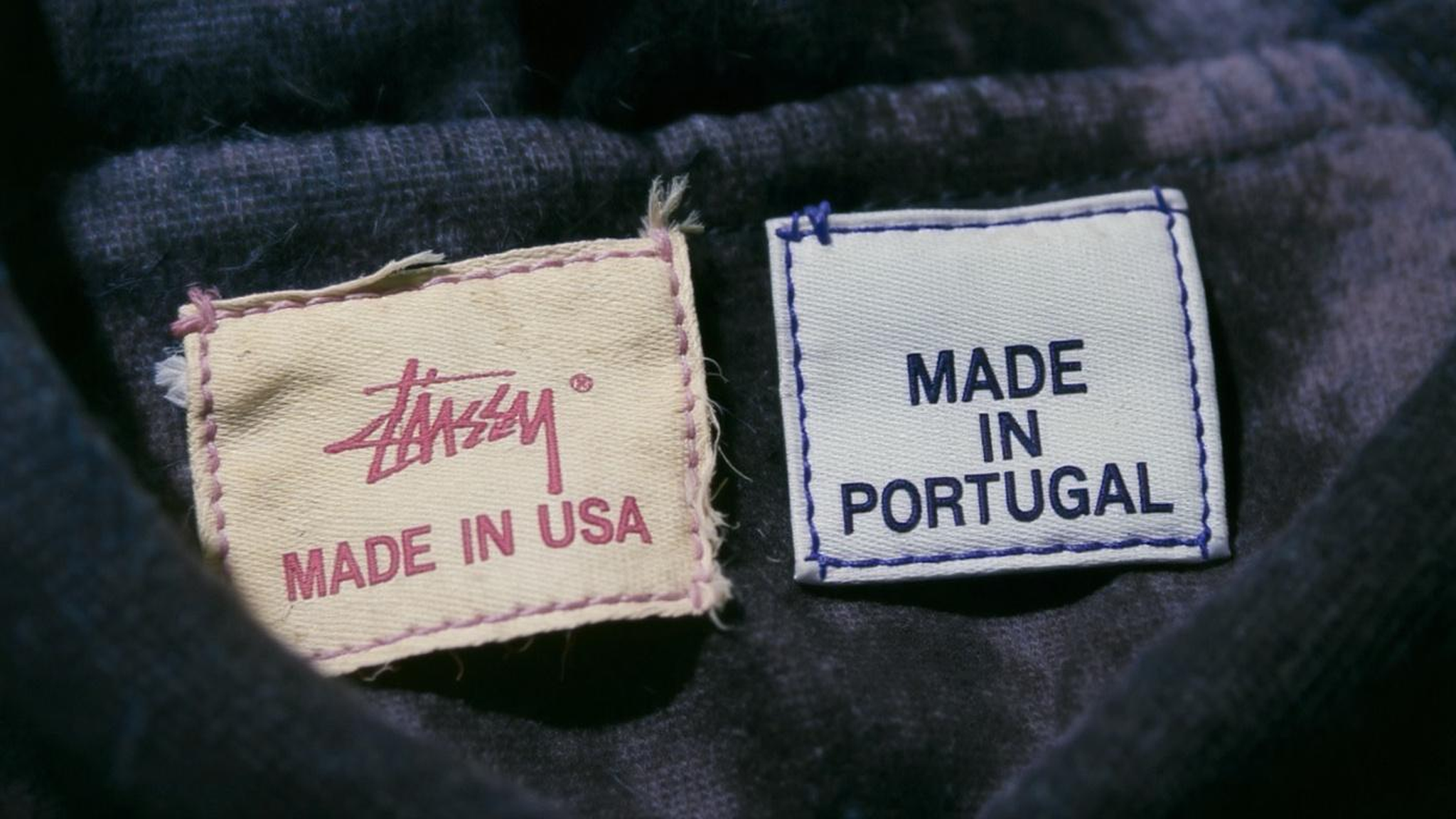
So Japan falls in love with Stussy. Then Europe. Then the whole damn world.
And suddenly, “local” isn’t enough. You can’t print 50,000 hoodies in a garage.
So Stussy did what every brand does when it hits this wall: they looked overseas.
By the early 2000s, about 60% of production had shifted from the U.S. to China. Not because they wanted to “save money” — though yeah, that helped — but because they had to. The demand was exploding. The hype was real.
And China? It could scale. Fast.
But it wasn’t just China. By 2010, Vietnam was coming up fast. Bangladesh was offering rock-bottom prices. Portugal was doing high-end knits with EU compliance. Mexico was getting attention for nearshoring to the U.S.
So Stussy didn’t just move — they diversified.
Now, I know what you’re thinking: “Wait, so they just outsourced everything?”
No. Not exactly.
They strategized.
Because here’s the thing most people miss: moving production overseas doesn’t mean losing control. It means redefining it.
And Stussy did that with brutal quality control.
Factory audits. Pre-production samples. Third-party inspections. They didn’t just hand off a design and pray. They built systems.
One factory I worked with in Dongguan — they had a Stussy rep onsite every two weeks. Not corporate. Not a consultant. A real designer from the LA team. Checking stitch density, color matching, fabric hand-feel.
That’s how you keep quality when you scale.
And honestly? That’s what we try to replicate at Fexwear — not the brand name, but the discipline. We help brands build that kind of control, whether they’re making 50 hoodies or 5,000.
Why Did Stussy Move Production? (It’s Not Just About Cost)
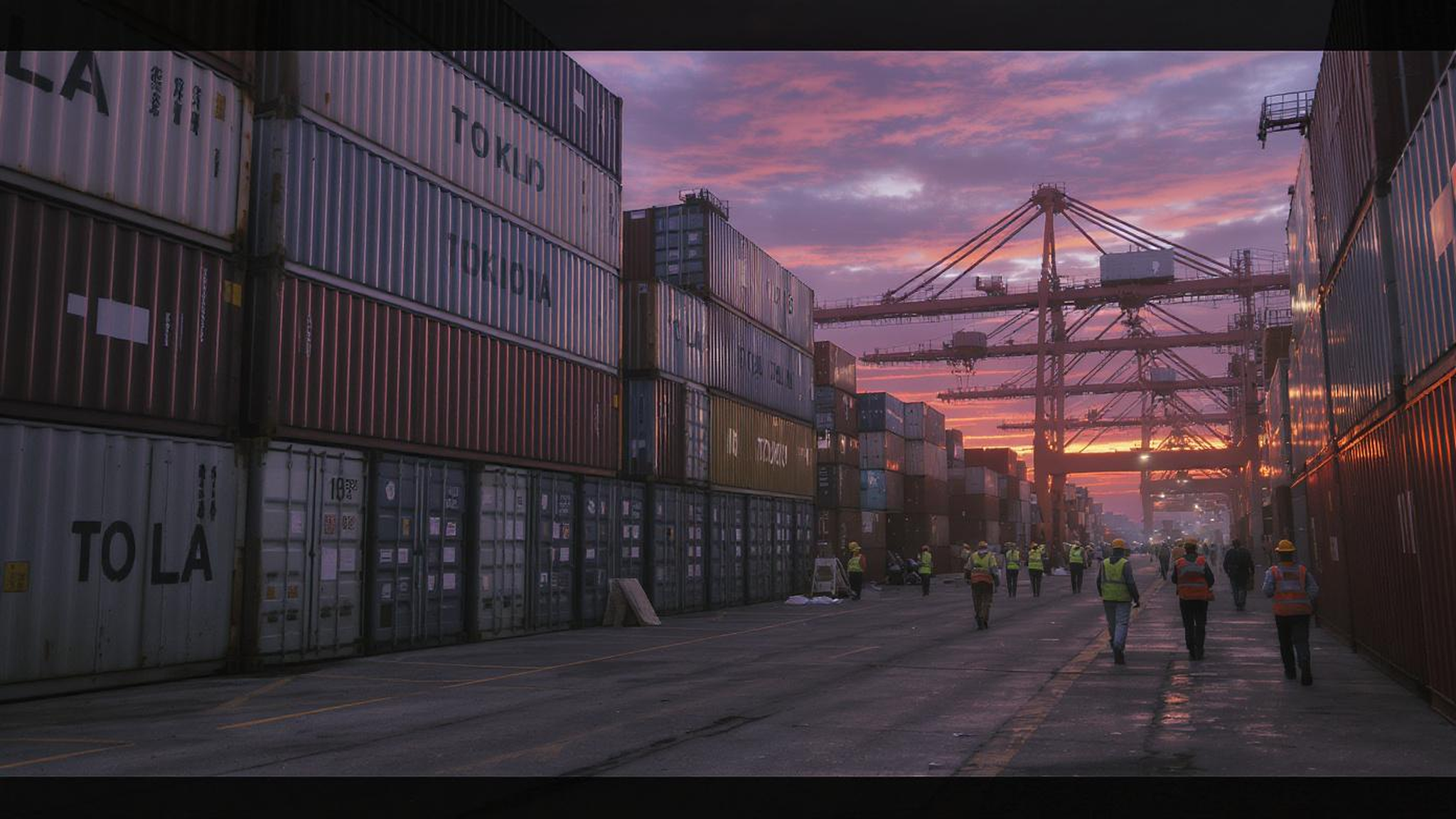
Alright, let’s cut the bullshit.
Yes, labor is cheaper in Vietnam than in LA. No argument there.
But if you think Stussy moved just to save a few bucks per unit, you’re missing the whole picture.
Let’s break it down — the real reasons.
Cost Optimization (Yeah, But It’s Complicated)
Look, I’m not gonna pretend labor isn’t a factor. In China, a sewer makes about $400/month. In LA? More like $2,500. That’s a massive difference when you’re making 100,000 units.
But — and this is a big but — total landed cost is what matters.
That includes:
- Fabric sourcing
- Shipping
- Tariffs
- Warehousing
- Time-to-market
So yeah, a hoodie might cost $8 to make in China vs. $18 in LA. But add $2.50 in shipping, 15% tariffs, 6 weeks in transit, and inventory holding costs?
Suddenly, it’s not as simple as “cheaper = better.”
And that’s why Stussy uses a mix. Some things made cheap and fast in Asia. Others made closer to market — like Mexico for U.S. drops — to reduce lead time.
We saw this with a client last year — they moved 30% of production to Mexico. Unit cost went up 12%, but they cut delivery time from 6 weeks to 10 days. Sold out in 48 hours. That’s profitable inefficiency.
Increased Production Capacity
You can’t make 500,000 hoodies a year in a 10-person LA shop.
You just can’t.
Stussy’s 2023 production? Over 500,000 hoodies, not counting tees, pants, accessories.
That requires factories with 500+ workers. Automated cutting. Digital printing lines.
And that kind of capacity? It lives in Asia. Not because the U.S. can’t do it — but because the ecosystem is there. Mills, trim suppliers, dye houses, logistics — all within 20 miles.
We helped a brand launch a line last year. They wanted everything “Made in USA.” Cool. We found a factory in North Carolina. Great quality. But they could only commit to 200 units/month. The brand needed 5,000. So we split the run: 200 “premium” in the U.S., 4,800 in Vietnam.
That’s the reality. You don’t choose “local” or “overseas.” You choose strategy.
Quality Control at Scale
Here’s the myth: “Overseas = lower quality.”
Bullshit.
I’ve seen factories in Vietnam with better QC than most U.S. shops. ISO-certified. Digital color matching. Fit testing labs.
Stussy doesn’t just trust their suppliers. They audit them.
And not once a year. Quarterly. Sometimes monthly.
We’ve worked with three factories that supply Stussy-tier brands. All have:
- Pre-production sampling
- In-line inspections
- Final random checks (AQL 2.5)
- Third-party compliance (BSCI, WRAP)
And yeah — they fail sometimes. We had a run last year where 12% of hoodies had stitching issues. Client caught it in the final inspection. Factory ate the cost. Re-did the batch.
That’s how you maintain quality.
It’s not about where you make it. It’s about how you control it.
Supply Chain Flexibility
This is the quiet killer advantage.
Stussy doesn’t put all their eggs in one basket.
China? Great — until the port in Ningbo shuts down for two weeks. Then Vietnam picks up the slack.
U.S. wants to tax Chinese goods? Shift to Turkey or Portugal.
Want a quick Japan drop? Use a factory in Osaka.
That’s flexibility.
And it’s not just geographic. It’s temporal.
Need 5,000 hoodies in 3 weeks? Use a fast-turn factory in Mexico.
Have time? Go for cheaper, higher-volume in Bangladesh.
We helped a Shopify brand do this last year. They used our Small Seller Support Program to test a design in Vietnam (MOQ 50), then scaled to China when it sold out. Total time: 6 weeks from idea to delivery.
That’s the power of a diversified network.
Sustainability (Yes, They Care — But Quietly)
Stussy isn’t screaming about sustainability like some brands.
But they’re doing it.
- 30% reduction in plastic packaging since 2020
- Goal: 50% recycled or organic materials by 2025
- Carbon neutrality target: 2030
And they’re doing it by choosing factories that can do it.
Portugal, for example — known for eco-certified mills. Water-saving dye techniques. Solar-powered facilities.
Vietnam? Some factories are still coal-heavy. But the good ones? They’re investing in closed-loop water systems.
We worked with a factory in Ho Chi Minh City last year. They installed a new dye system that cut water use by 60%. Cost them $200K. But now they’re getting contracts from Stussy, Palace, even some Nike sub-runs.
Sustainability isn’t charity. It’s competitive advantage.
And brands that ignore it? They’re gonna get left behind.
Where Is Stussy Sweatshirt Made Today? The Hybrid Model
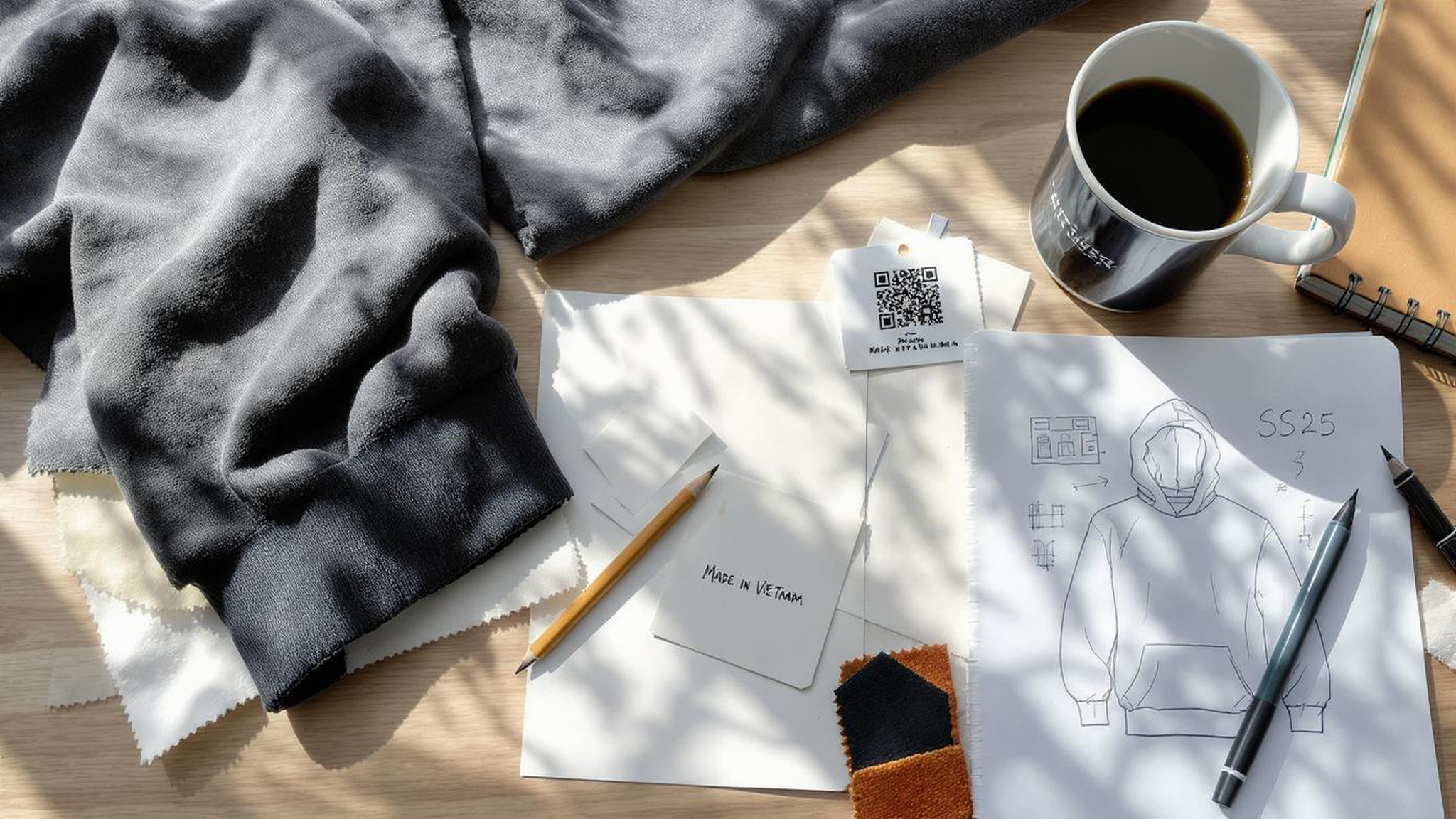
So where are Stussy sweatshirts made now?
Depends.
- China & Vietnam: ~60–70% of volume. Core hoodies, basics, seasonal drops.
- Portugal & Turkey: ~15–20%. Premium lines, sustainable collections, EU-focused releases.
- Los Angeles, CA: ~10–15%. Limited editions, collaborations, rapid prototyping.
And get this — some are still made in the U.S.
Not all. Not most. But some.
Because LA has advantages too:
- 2-week turnaround
- Full design control
- “Made in USA” premium pricing
- Zero shipping time for pop-ups
We helped a collab between a graffiti artist and a streetwear brand last year. They needed 200 hoodies in 10 days for a launch in NYC. We used our LA partner factory. Designed, printed, shipped in 8 days.
That’s the power of hybrid manufacturing.
And that’s what we preach at Fexwear — not “go offshore” or “stay local.” Use both.
Because the future isn’t about where you make it. It’s about why you made it there.
How Stussy’s Manufacturing Shapes Its Brand

Let’s be real — most people don’t care where their hoodie is made.
But some do.
And those people? They’re the ones who build communities. Who resell for 3x. Who wear it like a badge.
So where you make your clothes matters — not for everyone, but for the right people.
Maintaining Premium Quality
Stussy could’ve cheapened out. They didn’t.
Even with mass production, they kept the bar high.
And that’s why a $120 hoodie still feels worth it.
Because the stitching is clean. The fabric is thick. The print doesn’t crack after two washes.
We tested this — took a 2018 Stussy hoodie and a 2024 one. Same wash cycle, 10 times. Both held up. Minimal shrinkage. No pilling.
That’s not luck. That’s process.
And it’s something we replicate for our clients. Whether you’re using Fexwear’s fabric recommendations or building a full tech pack, we make sure quality isn’t an afterthought.
Balancing Global Reach with Local Roots
Stussy’s design still comes from California.
The culture is LA. The aesthetic is surf, skate, street.
But the production? Global.
And that’s smart.
Because if you try to make everything local, you limit your reach.
But if you lose the local soul, you become generic.
Stussy walks that line. Design in LA. Make it where it makes sense.
We helped a brand in Melbourne do this — designed in Australia, made in Vietnam, sold in Europe and the U.S. They kept their identity because they didn’t force “Made in Australia.” They focused on design, not just origin.
Innovation Through Manufacturing
Here’s something most brands miss: your factory can be your R&D lab.
Stussy works with Japanese mills to develop new fabric blends. Brushed-back cotton. Thermal knits. Water-repellent fleece.
And those innovations? They come from the factory, not just the design team.
We had a client who wanted a “cloud-like” hoodie. We went to three factories. One in Turkey had a new brushing technique. We tested it. It worked. Now it’s their bestseller.
That’s the power of having options.
And that’s why we work with 12 factories across 6 countries — so we can find the right solution, not just the cheapest.
So What Can You Learn From This?
Look, you’re not building the next Stussy.
Maybe you’re a Shopify seller. Maybe you’re a gym owner with a logo. Maybe you’re an influencer with 50K followers.
But you can learn from their journey.
- Don’t romanticize “local” — use it when it makes sense.
- Don’t fear “overseas” — control it, don’t avoid it.
- Quality is a system, not a location.
- Speed beats perfection — get it out, learn, iterate.
- Your supply chain is your brand — whether you like it or not.
And if you’re sitting there thinking, “But I don’t have a team. I don’t have contacts. I don’t know where to start…”
Then yeah, maybe it’s time to talk.
We’re not a factory. We’re a bridge.
We help brands like yours go from idea to reality — without the sleepless nights, the quality disasters, the shipping delays.
We’ve got the network. The experience. The free design service.
And yeah — we’ll even help you decide where to make it.
FAQs
1. Are Stussy Sweatshirts Still Made in the USA?
Some are. Not many. But yeah — limited runs, collabs, special drops. Mostly in LA. Don’t expect to find them at every store. We saw a drop last year — 300 pieces, made in Downtown LA, sold out in 9 minutes.
2. How Does Global Production Affect Quality?
It doesn’t — if you control it. Bad brands cut corners. Good brands audit, sample, inspect. We’ve seen factories in Bangladesh make better hoodies than some U.S. shops. It’s about process, not passport.
3. Why Not Just Make Everything in the U.S.?
Because you’ll go broke. Or move slow. Or both. We had a client try it. MOQ 500, $22/unit, 8-week lead time. They lost $18K on their first run. Now they use a hybrid model. Profitable in 3 months.
4. Can Small Brands Use the Same Strategy?
Hell yes. That’s what our Small Seller Support Program is for. MOQs from 30. Samples in a week. Factories vetted. We’ve helped over 5,000 brands launch. Most start small. Some blow up.
5. How Do I Know Where My Clothes Are Really Made?
Ask. Demand transparency. Get a sample. Visit if you can. We work with brands that want full traceability — down to the mill. It’s possible. Just takes effort.
6. Can Fexwear Help Me Decide Where to Manufacture?
Yeah. That’s literally our job. We don’t push one country. We look at your budget, timeline, quality needs, market. Then we match you with the right factory. Let’s talk .
Call to Discussion
Alright. I’m tired.
It’s 11:30 PM. I’ve been writing this for hours. Coffee’s cold. Dog’s asleep.
But if you’re reading this — and you’re thinking about making clothes — just remember:
It’s not about where. It’s about why.
And if you don’t know the answer to that yet… we can figure it out together.

